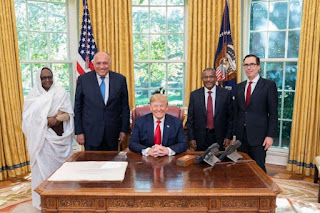INTRODUCTION
Hello and welcome to my blog! Over the next few weeks, I am going to research and write blog posts about the dynamics of water politics in Africa.
Before I start, I must admit that I do not know a lot about water and development in the continent of Africa. This lack of knowledge on such an important issue, and of Africa in general, has drawn me to choose this module. Africa tends to be presented to Western audiences by the media as a huge single entity, as 'one country', a point highlighted by Binyavanga Wainana in his article 'How to write about Africa'. This is something I have noticed in my everyday life. A non negligeable amount of people will talk about Africa without precising which country they are referring to, if any, something they wouldn't do for other continents. Inhabitants of Western countries sometimes see issues in a certain African country and generalise these same issues to be present everywhere on the continent. This is the case of water in Africa, with people thinking that the entire continent is in a perpetual state of water scarcity, (Naik, 2016) with a lack of access to safe water supplies.
Africa is a huge continent, the second biggest in fact, representing 20% of the Earth's land surface, and it is comprised of 54 sovereign countries, the most of any continent. It can contain nearly the entire Western world! Therefore, it is important to not make any generalisations about Africa, as different countries experience the issue (and attempt to tackle it) of water and development in different ways.
The politics surrounding water in Africa are not so much about the amount of water available, but more so about the distribution of it. The continent holds 9% of the world's freshwater resources (Gaye and Tindimugaya, 2018) but the access and control of these water resources are not equally shared among African countries, which can lead to potential conflicts over water (Goldenberg, 2014).This is the case of the Nile river in East Africa. The most important branch of the Nile river (the Blue Nile) finds its source in Ethiopia, flowing through Sudan and Egypt before emptying in the Mediterranean Sea (Milas, 2013). The Upper Blue Nile River basin (one of the main tributaries of the Nile river) is the source of more than 60% of the river's water, and plays a central role for the economic and social development of the three aforementioned countries (Gebremicael et al, 2013).
In this blog, I will focus on the Nile River Basin in East Africa, the politics surrounding water of the riparian Nile countries, as well as the possible conflicts and cooperation between the different actors involved.
I hope this blog will help you understand a bit more about the complexities of the relationship between water and politics in Africa, as much as the research for this blog will help me understand it better too!
Thank you for reading!





Comments
Post a Comment